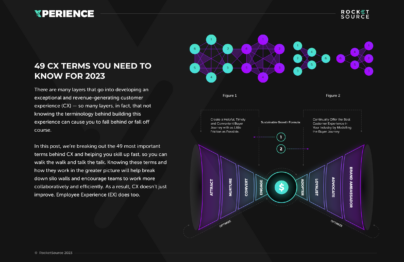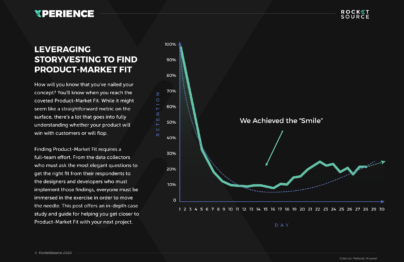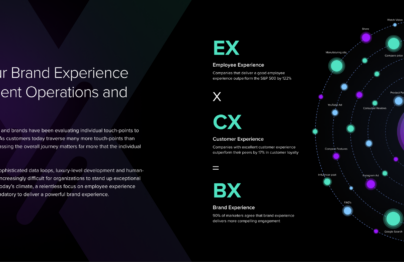Descriptive analytics use historical data to answer questions and drive the decision-making process for an organization by relying on data, trends and relationships. These analytics empower organizations to create a more sustainable, predictable growth path.
There is a tremendous amount of information available to organizations today. This level of information can cause analysis paralysis if a company is not careful. Descriptive analytics rely on accelerated technological innovation, intensified competitive pressure, and increased customer expectations to allow the facts and figures to tell a deeper story. As a result, teams can dig deeper into the root cause of what’s driving consumer behavior and leverage the quality of results needed from the data collected. Pairing this data and these descriptive analytics with a reliable framework empowers organizations to identify the metrics to develop better brand experiences and stay relevant along the growth path.


Building a Foundation for Actionable Insights
While descriptive analytics are useful for illuminating what’s happening in an organization, companies cannot fully leverage this information without a reliable framework.
At RocketSource, we developed the StoryVesting framework to empower organizations to correlate what they’re seeing from the data with the underlying motivations of the brand and customer experience. With these deeper insights, organizations can provide clearer direction for decision-makers, allowing them to root their decision-making in behavioral data.
Digging Deeper: The Importance of Humanizing Data
Disparate data points don’t tell a strong story. Descriptive analytics empower organizations to see what is happening along the customer journey and connect with today’s consumer.
When combining descriptive analytics with a comprehensive understanding of the customer’s motivation and experience to model and implement growth, organizations need both qualitative and quantitative data. This allows teams to know what customers and employees are thinking, feeling and saying, then compare that to what they’re doing.
This empathy-based, intimate understanding of a customer’s journey leads the way for descriptive analytics to be leveraged to develop initiatives and strategies that increase the lifetime value of a customer.


The Power of a North Star Metric with Descriptive Analytics
Descriptive analytics are helpful for getting a snapshot into current trends at a micro level, but how does that translate into the bigger picture for the organization?
When descriptive analytics are paired with a North Star Metric framework, organizations can take top-line metrics around which all company priorities are aligned and make strategic decisions.
These decisions will determine where the organization’s energy and brainpower will flow. Focusing on the wrong metric for too long can sacrifice growth for short-term success, causing companies to miss opportunities.
Nailing the North Star Metric and using descriptive analytics for decision-making can guide organizational growth across initiatives and in the market.
Four Key Elements of Quality Descriptive Analytics

Comparative
Showcase the direction you’re moving across time periods. Groups of users or against competitors.

Understandable
Mind-map metrics from input to output.

A Ratio or Rate
Analyze movement over time.
Actionable & Behavior Changing
Understand behavioral shifts via motivational triggers.
Customer Experience (CX) Terms
- 360° Degree View of the Customer
- AI Ops
- Barlow Bands
- Behavioral Triggers
- Bow Tie Funnel
- Brick-to-Click
- Business Impact Analysis (BIA)
- Cognitive Computing
- Cohort Analytics
- Content Mapping
- Conversational User Guidance
- Customer Data Profile
- Customer Experience (CX)
- Customer Friction
- Customer Insights Map
- Customer Journey
- Customer Journey Mapping
- Customer Satisfaction (CSAT)
- Customized Ratios
- CX Intelligence
- CX Led Growth
- CX Metrics
- Data as a Product (DaaP)
- Data as a Service (DaaS)
- Data Culture
- Data Driven
- Data Engineering
- Data Fabric
- Data Governance
- Data Humanization
- Data Hygiene
- Data Looping
- Data Mapping
- Data Mining
- Data Modeling
- Data Monetization
- Data Swamp
- Data Visualization
- Data Warehouse
- Data-Centric
- Descriptive Analytics
- Diagnostic Analytics
- Digital Asset Management (DAM)
- Digital Transformation
- Dirty Data In Dirty Data Out
- Embedded Intelligence
- Empathy Mapping
- Employee Data Profile
- Employee Experience (EX)
- EX to CX Data Mapping
- EX to CX Mapping
- Experience Management (XM)
- Gap Analysis
- Generative AI
- Human-Centered Design (HCD)
- Journey Analytics
- Machine Learning (ML)
- Managed Agile Services on Demand
- Modified Hoshin
- North Star Metric
- Party Data
- Pathway to Purchase
- Predictive Analytics
- Product-Market Fit Mapping
- Real Time Design Looping
- Revenue Acceleration
- RevOps
- S Curve of Growth
- Stack Impact Analysis
- StoryVesting
- Table Stakes Testing
- The 3 P’s
- User Experience (UX)
- User Insights Map
- User Interface (UI)
- Voice of the Customer (VoC)
- Voice of the Employee (VoE)
- World Cloud Generator Sentiment Mining
- X Analytics



